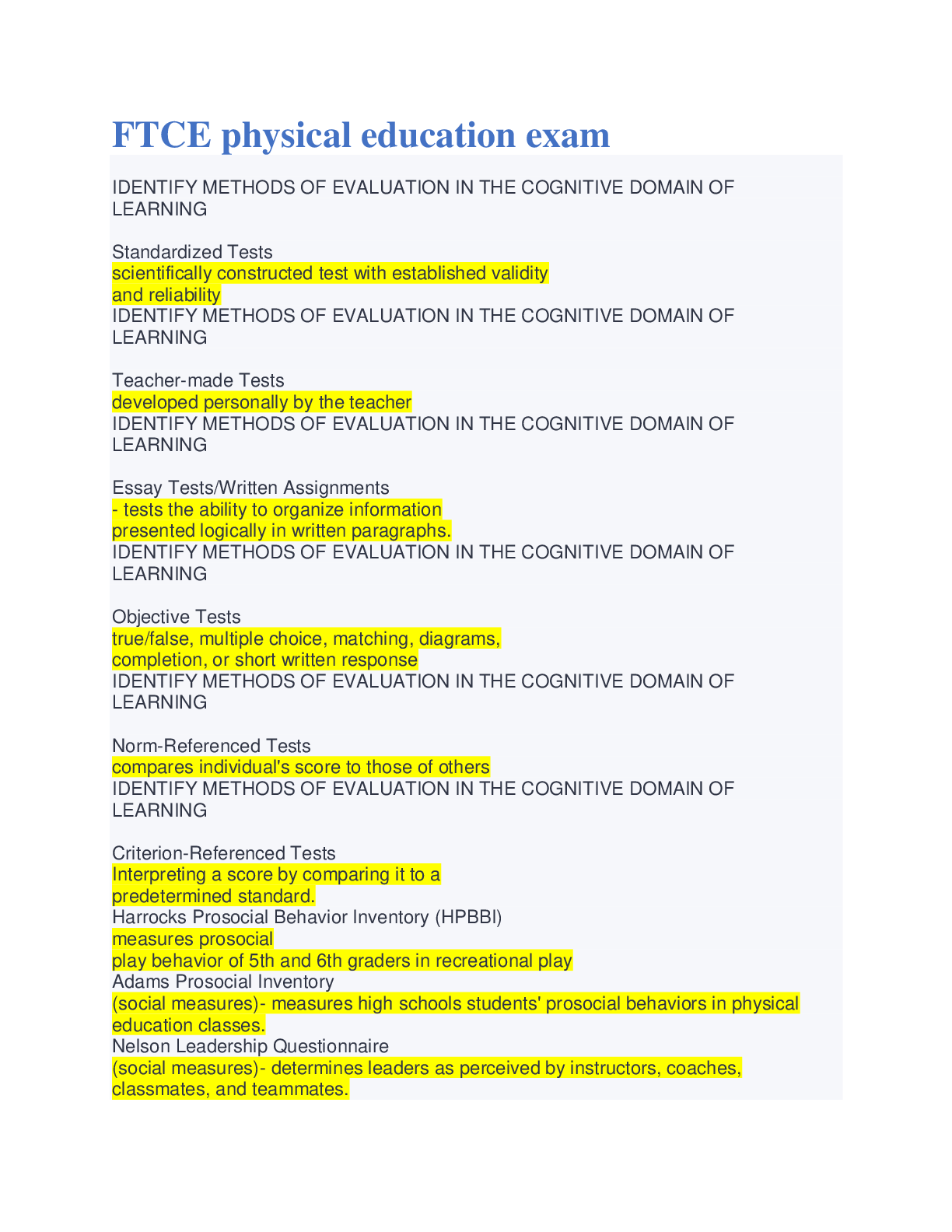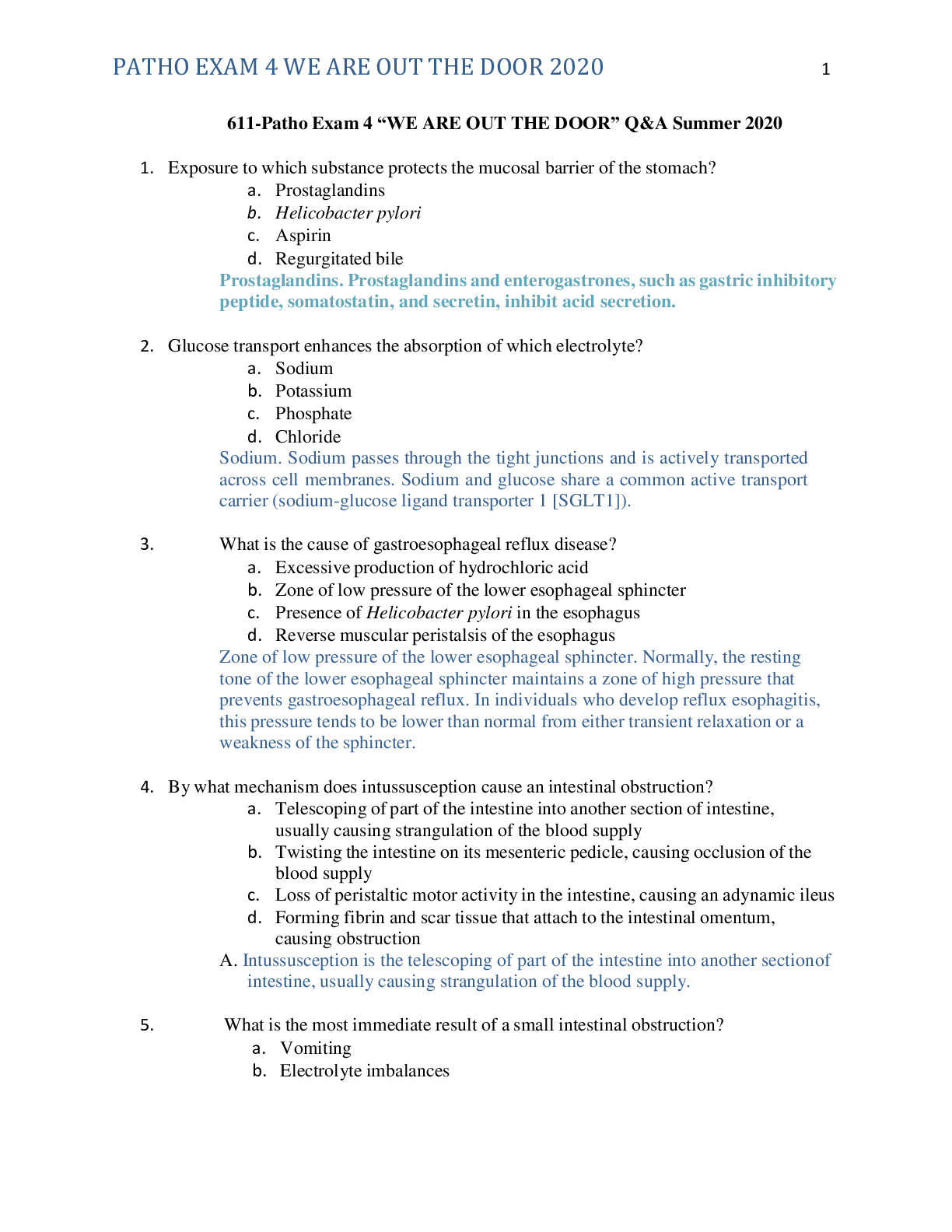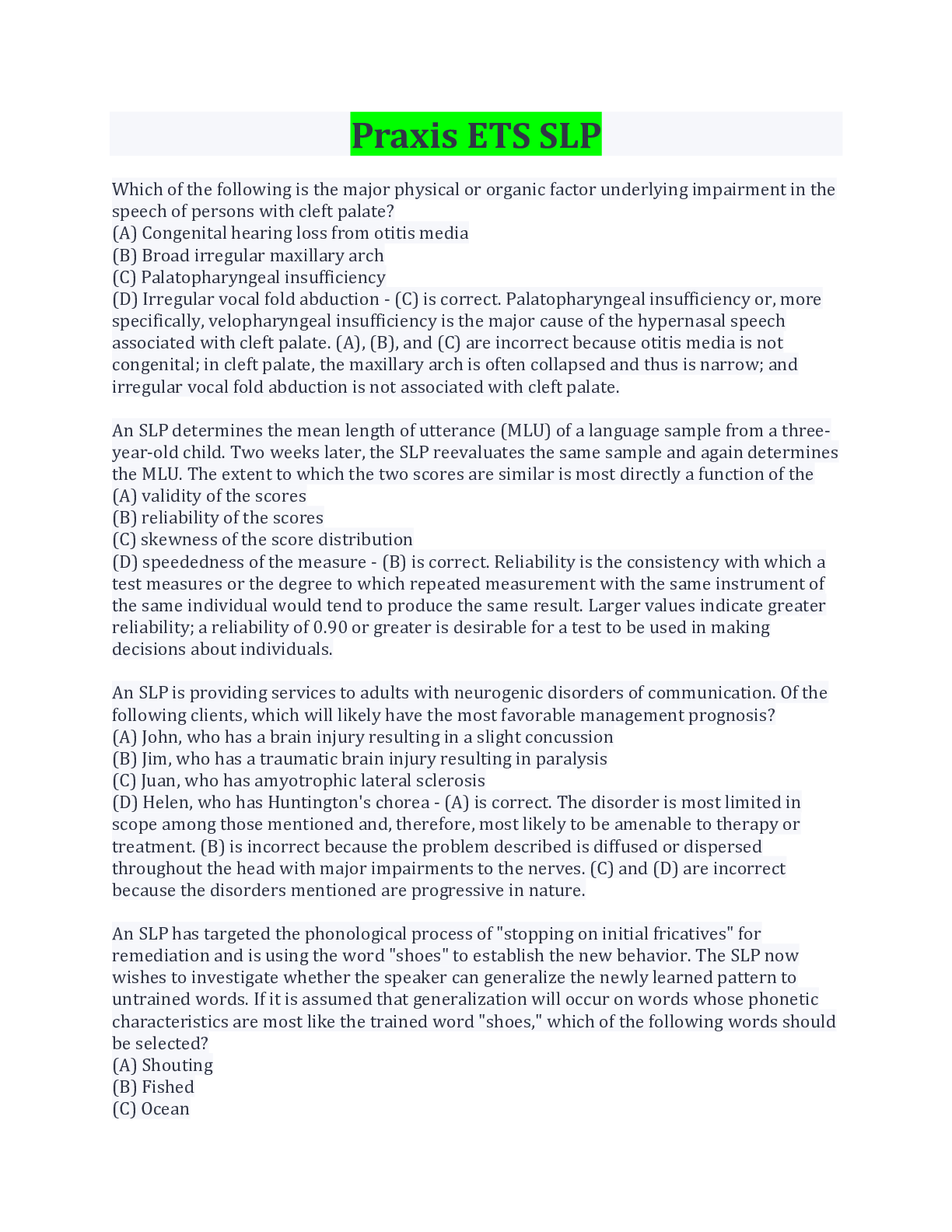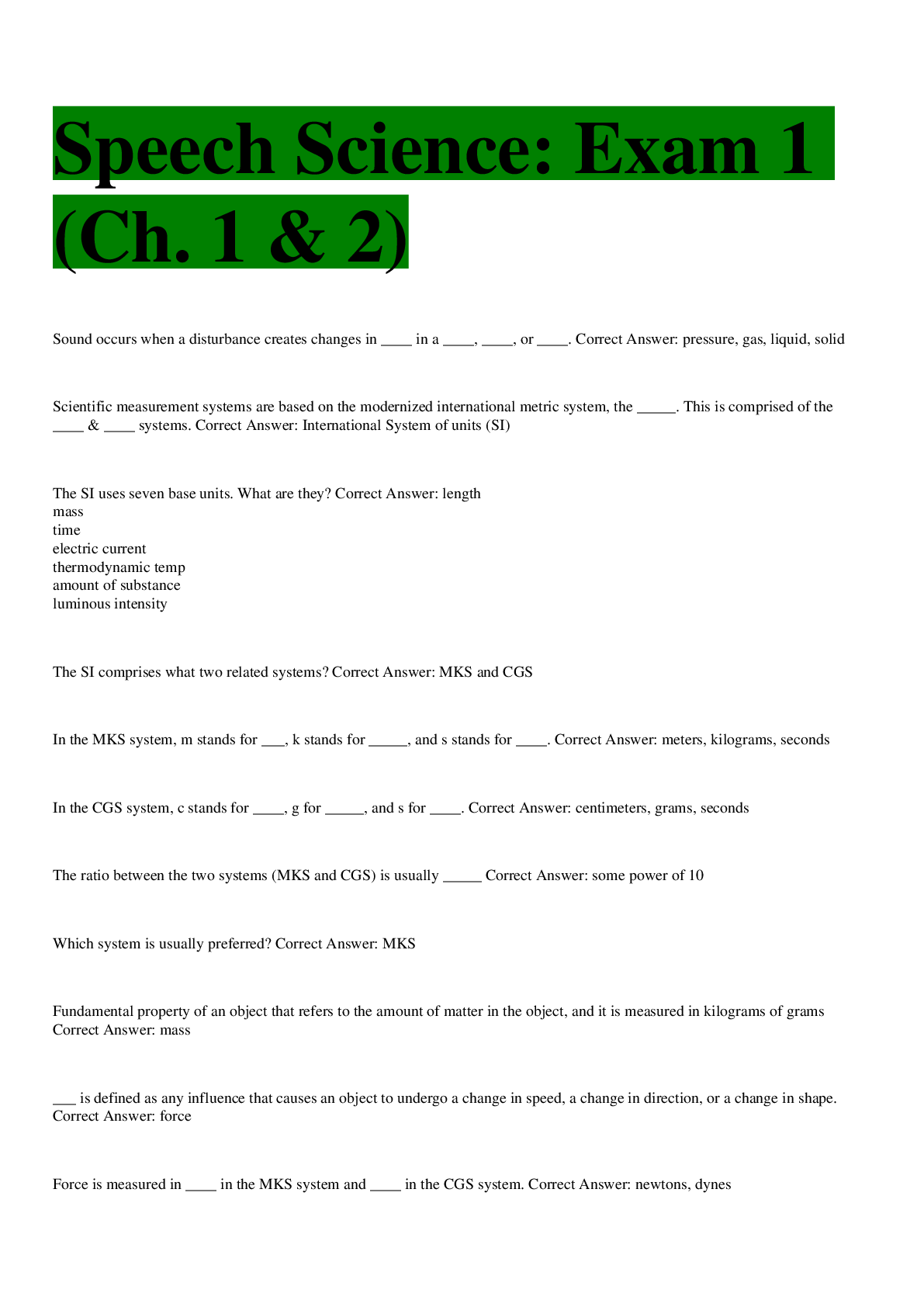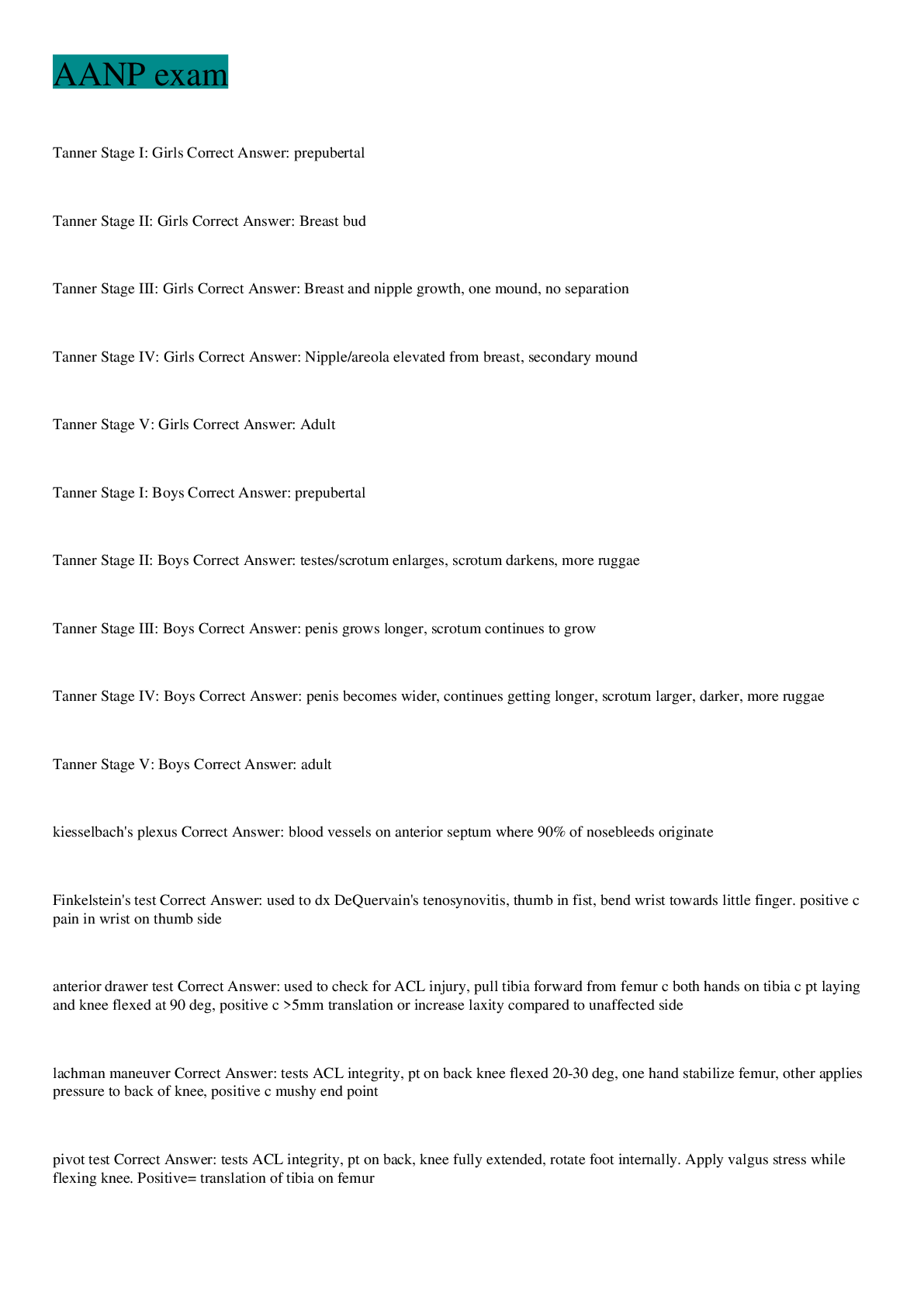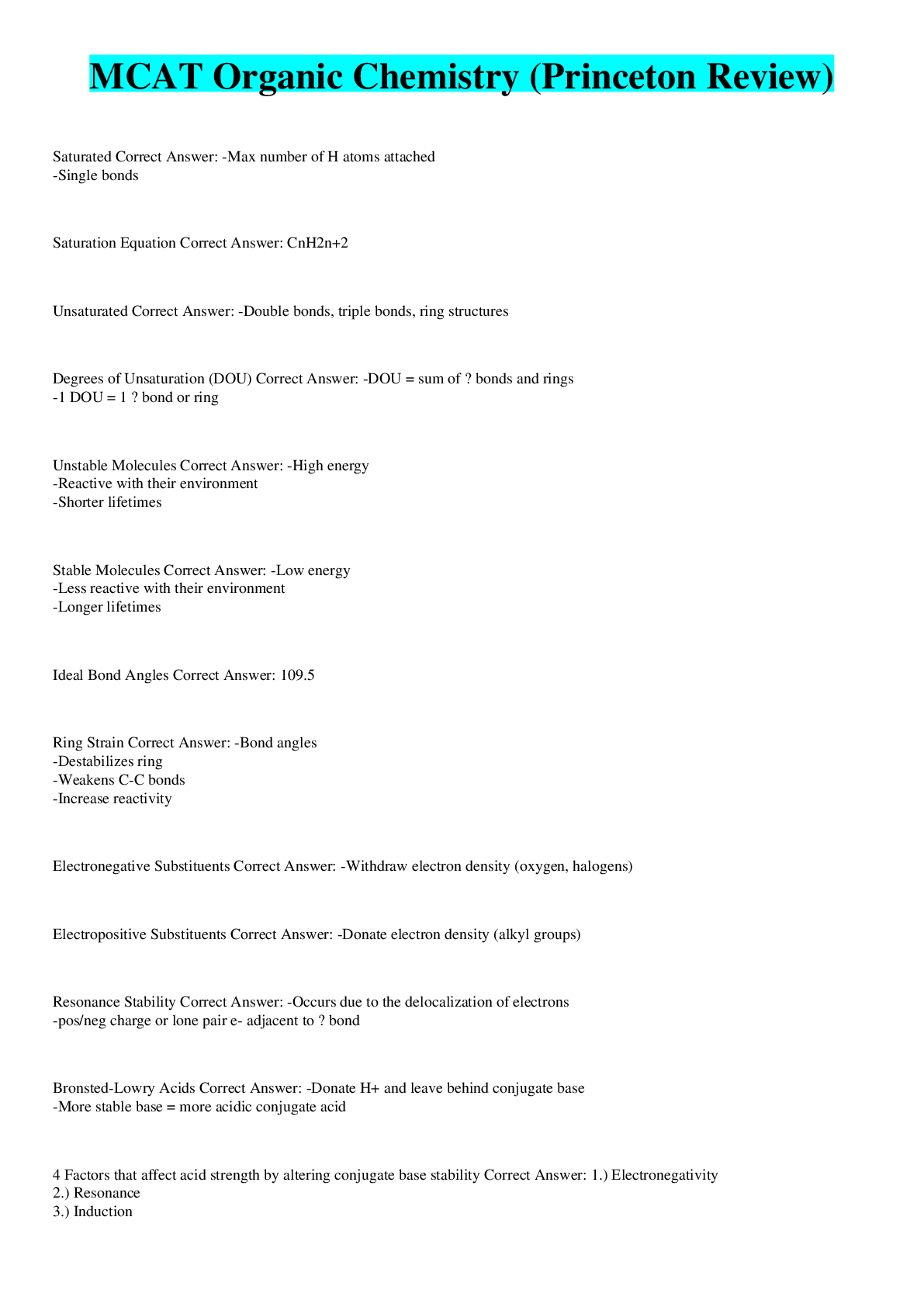Health Care > EXAM > Immunization Training (80 QUESTIONS) WITH ANSWERS| GRADED A (All)
Immunization Training (80 QUESTIONS) WITH ANSWERS| GRADED A
Document Content and Description Below
Ava has arrived at the clinic for her well-child visit. She is 4 months old. Ava's immunization record reveals that she has received the following vaccines: 2 doses of HepB 1 dose of Hib 1 do... se of rotavirus 1 dose of PCV13 1 dose of DTaP 1 dose of IPV Which vaccines should Ava receive at today's visit? Upon reviewing the immunization schedule for children and adolescents, Ava is due for her 2nd dose of Hib, rotavirus, DTaP, PCV13, and IPV. She is not due for her 3rd hepatitis B dose until 6 months of age. Even though it may be influenza season, she is too young to receive influenza vaccine. IIV is not recommended until 6 months of age. MMR and varicella, which are live vaccines, are not recommended until 1 year of age. What is the most common complication of pertussis? Pertussis, which is is caused by Bordetella pertussis, infects the respiratory tract and produces toxins that interfere with the function of the respiratory tract, ultimately causing the characteristic symptoms of pertussis. Symptoms begin as they would for the common cold but then transition to the paroxysmal (whooping) cough. Given the impact on the respiratory tract, pneumonia is the most common complication. Poor oxygenation during the coughing episodes can lead to hypoxemia and seizures, but these are less common. Colic is inconsolable crying, which has been attributed to abdominal pain. This is unrelated to pertussis. When looking at the schedule for vaccines that might be indicated for children and adolescents aged 18 years or younger based on medical indications, what does the orange bar represent? The schedule for vaccines that might be indicated for children and adolescents aged 18 years or younger based on medical indications includes six different color-coded bars. Yellow indicates that vaccination according to the routine schedule is recommended. Purple is for vaccines that are recommended for persons with an additional risk factor for which the vaccine would be indicated. The yellow and black checkered bar indicates that vaccination is recommended, and additional doses may be necessary based on medical condition. The footnotes will need to be used for further guidance. A white bar means that there is no recommendation. Red means the vaccine is contraindicated and orange indicates there is a precaution for vaccination. Herd immunity refers to which of the following situations? There are instances in which some individuals are not able to be vaccinated. For example, infants younger than 2 months of age are too you to receive DTaP and a child with a compromised immune system would not likely receive MMR. It is important to vaccinate those in the community who can receive the vaccine to avoid outbreaks and the transmission of disease to those unvaccinated. This is called herd immunity. Which of the following is the best example of a group with which individual pharmacists can collaborate to increase immunization rates in their communities? Pharmacists often work with their local health departments to provide vaccines and public health services in their communities. They may collaborate on various public health outreach and emergency response activities. The Advisory Committee on Immunization Practices (ACIP) is the leading authority in the U.S. that provides comprehensive vaccination recommendations and guidelines. These recommendations are reviewed and approved by the CDC. The National Vaccine Advisory Committee (NVAC) is an entity of the U.S. Department of Health and Human Services. NVAC has the responsibility of recommending ways to prevent disease through vaccine development and promoting opportunities to prevent adverse reactions to vaccines. While pharmacists may work with the ACIP, the CDC, and NVAC on immunization initiatives, they do not often collaborate on a local level. Kyle is a 5-year-old boy who is up to date with his vaccinations. He has never experienced any adverse effects from vaccinations. At his next well-child check-up, Kyle will be receiving the following vaccines: IPV, MMR, varicella vaccine, and a tetanus-containing vaccine. Which of the following tetanus-containing vaccines would be appropriate for him? DTaP is a five-dose series given at ages 2, 4, 6, 15 through 18 months, and 4 through 6 years. Kyle is due for his 5th and final dose of DTaP. DTaP is appropriate for children less than 7 years of age. DT is only reserved for children who have a contraindication to the pertussis component in DTaP. Children, adolescents, and adults 7 years of age and older who require protection against tetanus, diphtheria, and pertussis would receive Tdap. Following the one-time dose of Tdap, a Td booster should be given every 10 years. Why was the live attenuated influenza vaccine (LAIV) removed from the ACIP's influenza vaccine recommendations? When used according to its approved indications, LAIV has not been shown to cause influenza or serious adverse events. However, based on data that demonstrated LAIV efficacy was lower than expected in the 2013-2014 and 2015-2016 influenza seasons, the ACIP made the recommendation to avoid its use. This recommendation began with the 2016-2017 influenza season. Although there have been some production and supply issues with LAIV in recent years, this had no impact on its removal as a recommended vaccine for influenza. Which of the following statements about live attenuated vaccines is true? Live attenuated vaccines are produced by weakening the virus or bacteria to reduce the likelihood that it can cause disease. Inactivated vaccines are produced by killing the virus or bacteria. They include polysaccharide vaccines (which can be conjugated or unconjugated), toxoids, or cellular vaccines (which can be viruses or bacteria, or fractions of either). Live attenuated vaccines tend to produce more persistent, longer-lasting immunity than inactivated vaccines. Live attenuated vaccines must replicate inBarbara is a 60-year-old woman who presents to the pharmacy for two vaccines: HZV and IIV. Which of the following are the appropriate doses and routes for administering these vaccines to this patient? order for the body to produce an immune response. If given to a patient with a compromised immune system, there is a chance they could replicate in an uncontrolled fashion and cause disease. Circulating antibodies may interfere with a live attenuated vaccine's ability to replicate. [Show More]
Last updated: 2 years ago
Preview 1 out of 15 pages

Buy this document to get the full access instantly
Instant Download Access after purchase
Buy NowInstant download
We Accept:

Also available in bundle (1)

Bundle for Immunization exam Compilation
Bundle for Immunization exam Compilation
By Crum 2 years ago
$30.5
6
Reviews( 0 )
$10.00
Can't find what you want? Try our AI powered Search
Document information
Connected school, study & course
About the document
Uploaded On
Sep 24, 2022
Number of pages
15
Written in
Additional information
This document has been written for:
Uploaded
Sep 24, 2022
Downloads
0
Views
61












